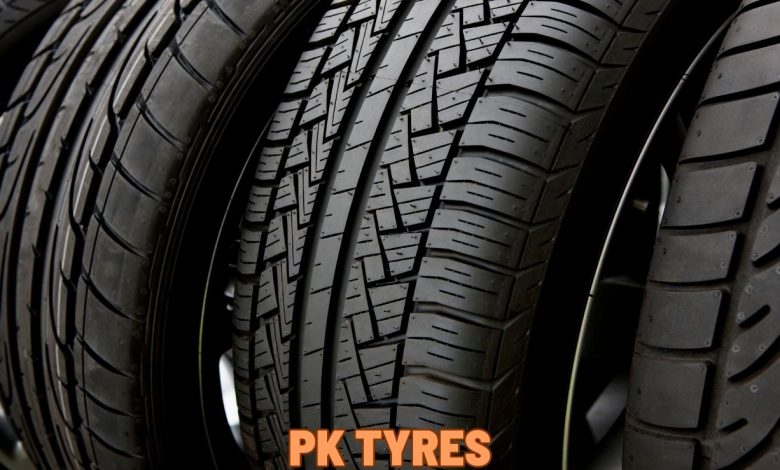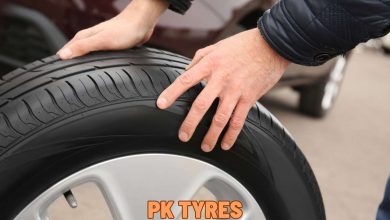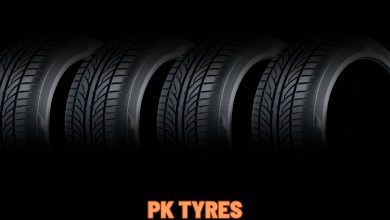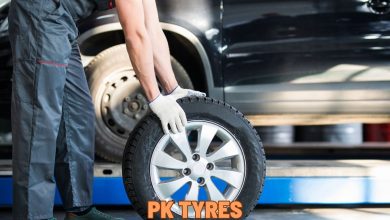Exploring Run-Flat Tyres: Pros and Cons for Drivers

Technology is changing cars to make driving better, safer, and more convenient. Car manufacturers have come up with a new type of tyre called run-flat tyres. These tyres allow drivers to keep driving for a bit even if they get a puncture or a blowout. In this article, we will explore the pros and cons of run-flat tyres and how they affect drivers.
Every vehicle needs tyres to drive, and it’s important to take care of them for a safe and smooth ride. Tyre punctures or blowouts while driving on a busy road or highway can be inconvenient. Run-flat tyres help solve a common driving problem. Let’s talk about their benefits and downsides in this article.
What are run-flat tyres?
Run-flat tyres let drivers keep going for a bit after a tyre puncture or blowout. These tyres have strong sides that can hold up the car’s weight, even if the tyre is empty. The tyres don’t need a spare, jack, or tools in the car’s trunk.
Advantages of run-flat tyres
- With run-flat tyres, you don’t have to change a tyre on the road. It’s really convenient for drivers. If their tyre gets damaged, they can go to the nearest service center or drive home to get it fixed or replaced.
- Run-flat tyres make driving safer by helping drivers keep control of their cars if they get a flat. This reduces the risk of accidents caused by tyre failures.
- Run-flat tyres save space in a car since they don’t require a spare tyre, jack, or tyre-changing tools.
- Having run-flat tyres gives drivers peace of mind. They can feel secure knowing that they won’t be stuck on the road if they have a puncture or blowout.
Disadvantages of run-flat tyres
- Run-flat tyres make the ride harsher because they have tougher sidewalls, which bear the vehicle’s weight. It results in a rough ride compared to regular tyres.
- Run-flat tyres can be noisier than regular ones, particularly at high speeds, as per some drivers’ reports.
- Run-flat tyres usually cost more than regular tyres. This is something to keep in mind if you’re on a tight budget.
- Run-flat tyres can only go a short distance of about fifty miles after they get a hole or burst. This means that drivers still need to get the tyre repaired or replaced as soon as possible.
- The Impact of Tyre Pressure on Your Driving Experience.
The cost of run-flat tyres
Run-flat tyres cost more than regular tyres. Prices depend on the brand, size, and model. On average, run-flat tyres cost 20% more than traditional tyres.
The lifespan of run-flat tyres
Run-flat tyres’ lifespan is like regular tyres, lasting about 50,000 miles on average. Run-flat tyres’ life can be impacted by driving habits, roads, and maintenance.
Run-flat tyres vs. traditional tyres
Run-flat tyres are better than regular tyres in many ways. They are more convenient, safer, and save space. However, they also have some downsides. These include a bumpy ride, more expense, and less distance when the tyre gets punctured or damaged.
Changing a run-flat tyre
Changing a run-flat tyre is not the same as changing a regular tyre. Specific steps and tools are required for this process. Have a professional mechanic or Tyre specialist replace a run-flat tyre. If not handled correctly, it can harm the tyre or the vehicle.
Maintaining run-flat tyres
Proper maintenance is essential for the lifespan and performance of run-flat tyres. To keep your tyres in good shape and perform well, make sure to regularly check the pressure, alignment, and rotation.
Run-flat tyres in extreme weather conditions
Run-flat tyres work well in different weather conditions including wet, dry, and snow. Drivers must change their driving habits based on the weather and drive safely.
Run-flat tyres and fuel economy
Run-flat tyres might use more fuel because their stiff sidewalls can make it harder to roll. Usually, the impact is small. Other things like car design, driving habits, and road conditions can balance it out.
Run-flat tyres and ride comfort
Run-flat tyres may give a bumpier ride than regular tyres because they have less give due to their stiff sidewalls. Newer run-flat tyres might be more comfortable to use.
Run-flat tyres and noise level
Drivers say run-flat tyres are noisier than regular ones, especially at high speeds. Some run-flat tyre brands and models are made to reduce noise levels, but this varies.
Run-flat tyres and vehicle compatibility
Run-flat tyres work with many vehicles, but make sure they fit your car’s size and model. Using the wrong type of run-flat tyre can result in poor performance and safety risks.
Conclusion:
Run-flat tyres have pros and cons. They are convenient and safe for drivers but they might make the ride harsher and be more costly. It’s up to the driver’s preferences and needs whether run-flat tyres are a good choice.
FAQs:
Q1. Are run-flat tyres more expensive than traditional tyres?
Run-flat tyres usually cost more than regular tyres. This depends on the brand, size, and model of the tyre and can vary in price.
Q2. Can I change a run-flat tyre myself?
It’s best to ask a mechanic or tyre specialist to replace a run-flat tyre because it needs special tools and steps.
Q3. Do run-flat tyres affect fuel economy?
Run-flat tyres may affect fuel efficiency, but the effect is usually small. It can be balanced out by car design, driving habits, and road conditions.
Q4. Are run-flat tyres compatible with all types of vehicles?
Run-flat tyres work with many types of vehicles, but make sure they fit your vehicle’s size and specs.
Q5. Do run-flat tyres produce more noise than traditional tyres?
Drivers say run-flat tyres are noisier than regular tyres, especially when driving fast. Some run-flat tyres are created to reduce noise, but this can vary based on the brand and model.
Q6. Are run-flat tyres more puncture-resistant than traditional tyres?
Run-flat tyres resist punctures better than regular tyres. They do this by using stronger side walls that can hold up the weight of the vehicle, even if they get punctured.
Q7. Can run-flat tyres be repaired after a puncture?
Fixing a run-flat tyre after a puncture is usually not advised. Doing this can harm the tyre’s inside structure, reduce its performance and safety. It’s usually recommended to replace the tyre entyrely after a puncture.
Q8. Are run-flat tyres suitable for off-road driving?
Run-flat tyres are usually not made for off-road driving. They have stiff sides that can make the ride less comfortable and give less grip on rough surfaces. It’s usually recommended to use specialized off-road tyres for off-road driving.
Q9. Can run-flat tyres be rotated like traditional tyres?
Run-flat tyres can be rotated like regular tyres, but it can be harder because of their special needs. You should follow the tyre rotation guidelines from the manufacturer. It’s best to let a pro mechanic or tyre specialist do it.
Q10. Are run-flat tyres more durable than traditional tyres?
Run-flat tyres last longer than regular ones because they have stronger sides that can handle punctures and blowouts. Cars can last a long time, but how you drive, the roads, and how you take care of it can still affect it.




